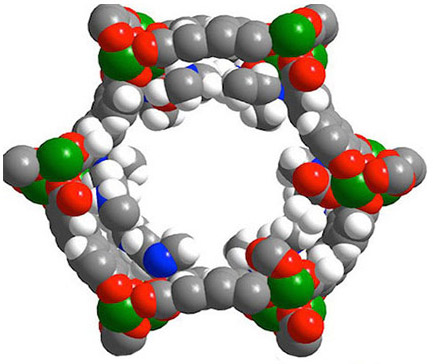
A team of researchers at Berkeley Laboratory, including the Molecular Foundry, have discovered a more effective and lower cost means to one day remove carbon dioxide (CO2) from coal-fired power plants. By modifying a metal-organic-framework (MOF), the researchers were able to more than triple the CO2-scrubbing capacity of the MOF, while significantly reducing parasitic energy.
Current carbon capture and storage technologies are based on aqueous amine scrubbers that impose a substantial energy penalty for their use. If widely implemented, these scrubbers would consume about one-third of the energy generated by a power plant. MOFs have been proposed as a highly promising alternative to amine scrubbers. Consisting of a metal center surrounded by organic “linker” molecules, MOFs form a highly porous three-dimensional crystal framework with an extraordinarily large internal surface area – a MOF the size of a sugar cube if unfolded and flattened would blanket a football field. By altering their composition, MOFs can be tailored to serve as highly effective storage vessels for capturing and containing carbon dioxide.

